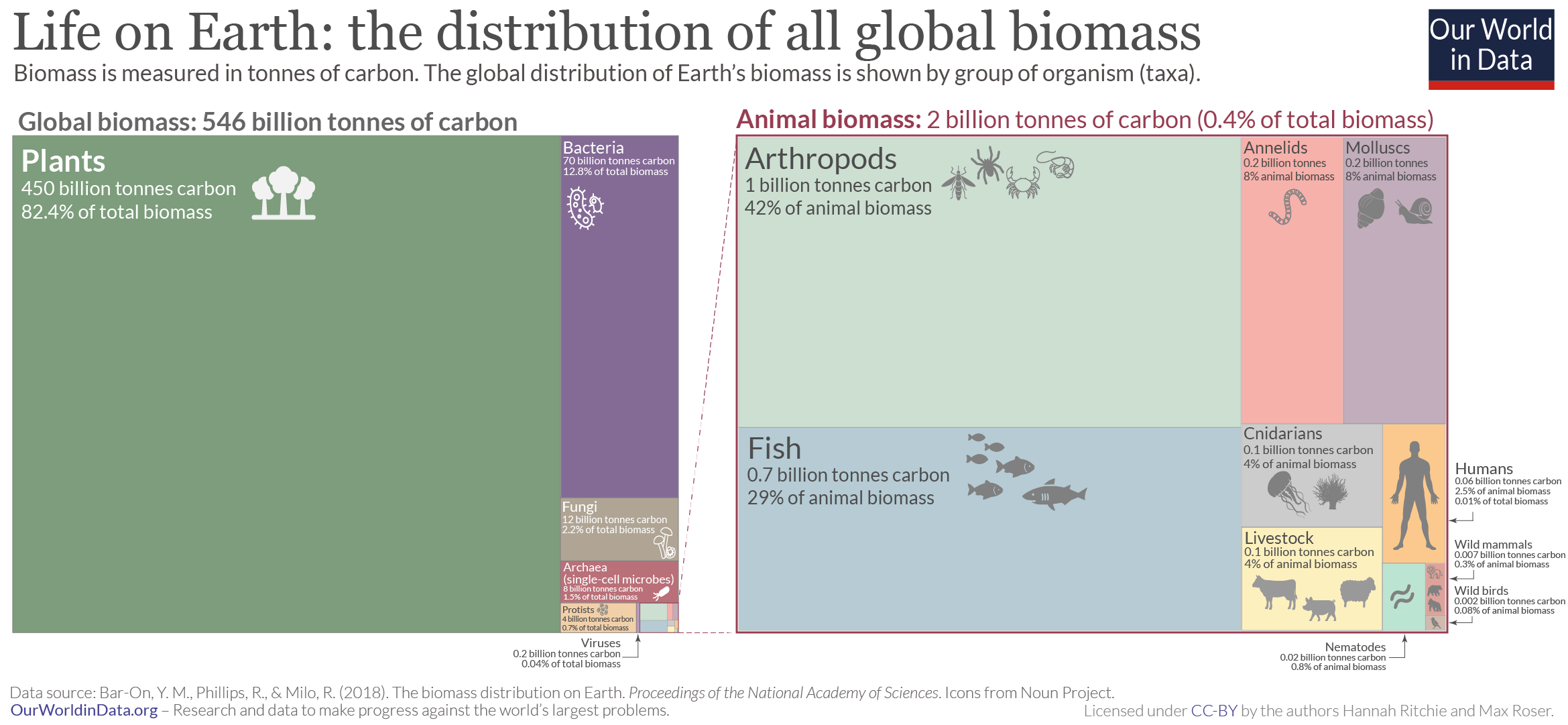Our planet is home to an incredible diversity of organisms. What does Earth’s biodiversity look like in the big picture?
In this post, I provide an overview – with a summary graphic – of Earth’s biomass, how it is distributed between taxa (the taxonomic group of organisms), and the environments within which they live. This summary is based on the findings of research by Bar-On, Phillips & Milo published in the Proceedings of the National Academy of Sciences (PNAS).1
There are several ways we can answer the question of how much life is on Earth. We could, for example, count the number of species, population sizes, or the number of individual organisms. But these metrics can make it difficult to compare between taxa: small organisms may have a large population but still account for a tiny percentage of Earth’s organic matter.
For a meaningful comparison, Bar-On et al. (2018) quantified life using the metric of biomass. Biomass is measured here in tonnes of carbon as it is a key building block of life.2
In the graphic below, I summarize global biomass distribution by taxonomic kingdom (on the left), with a magnified snapshot of the animal kingdom (on the right).
What are the stand-out points?
- Plants – mainly trees – dominate life on Earth: they account for more than 82% of biomass;
- Surprisingly, in second place is the life we cannot see: tiny bacteria sum up to 13%;
- While our perceptions are often focused on the animal kingdom, it accounts for only 0.4%;
- Humans account for just 0.01% of the biomass, so we’d need about 70 trillion of us to match Earth’s collective biomass.3

Humans comprise a tiny share of life on Earth — 0.01% of the total and 2.5% of animal biomass (animal biomass is shown in the right-hand box on the visualization above).
But we are also responsible for the animals we raise. Humans alone may seem insignificant, but our hunger for raising livestock means we have played a major role in shifting the balance of animal life: livestock account for 4% of animal biomass.4
Livestock accounts for more biomass than all humans on Earth, more than 50% greater than humans.
And livestock accounts for much more than all wildlife: Wild mammals and birds collectively account for only 0.38% — livestock, therefore, outweighs wild mammals and birds by a factor of ten.5

